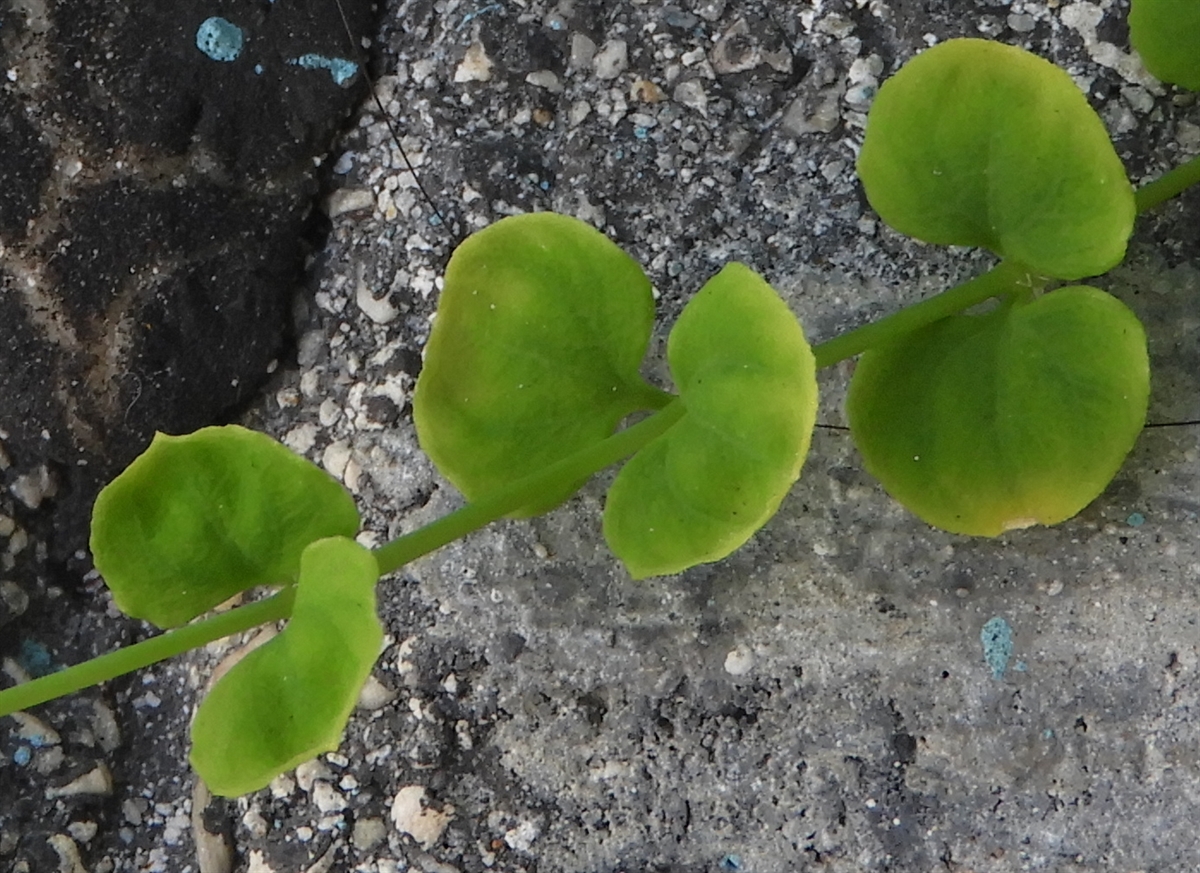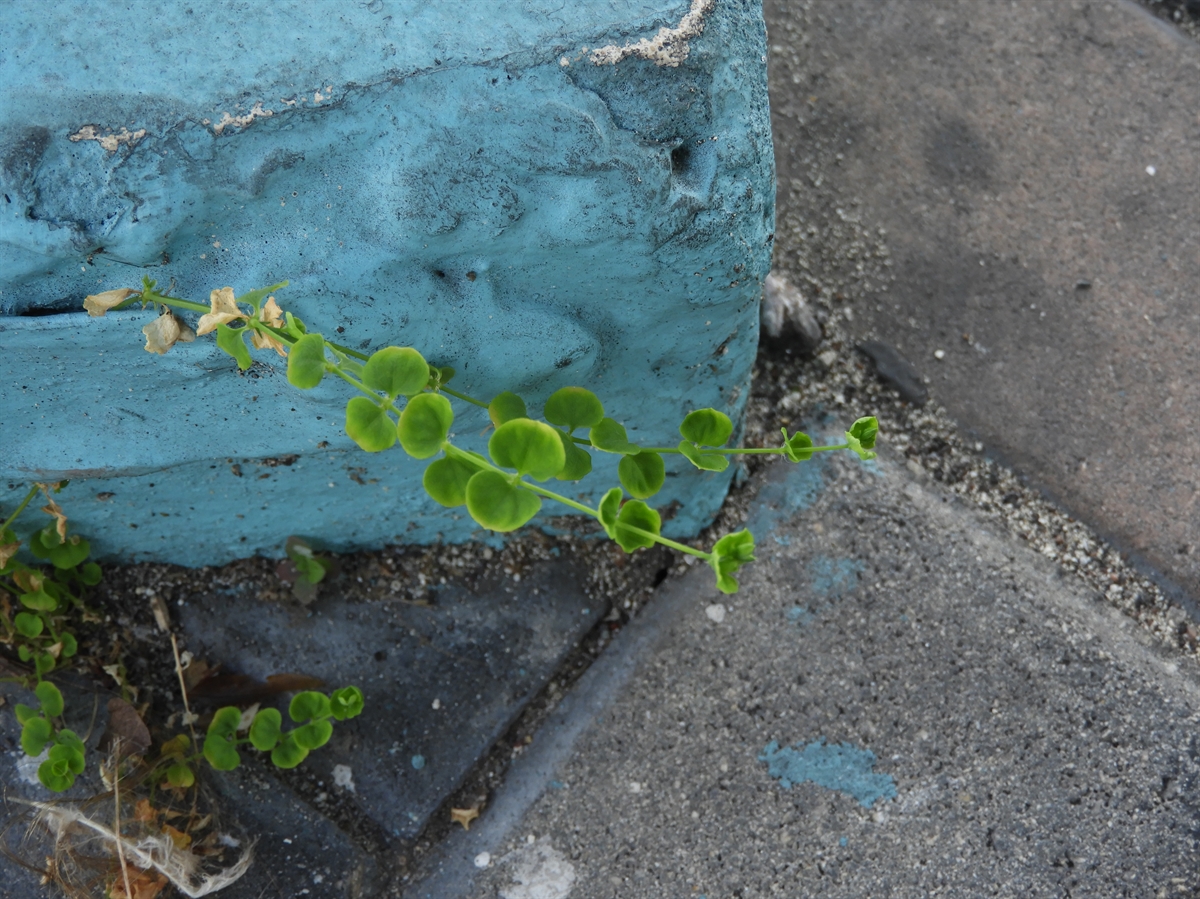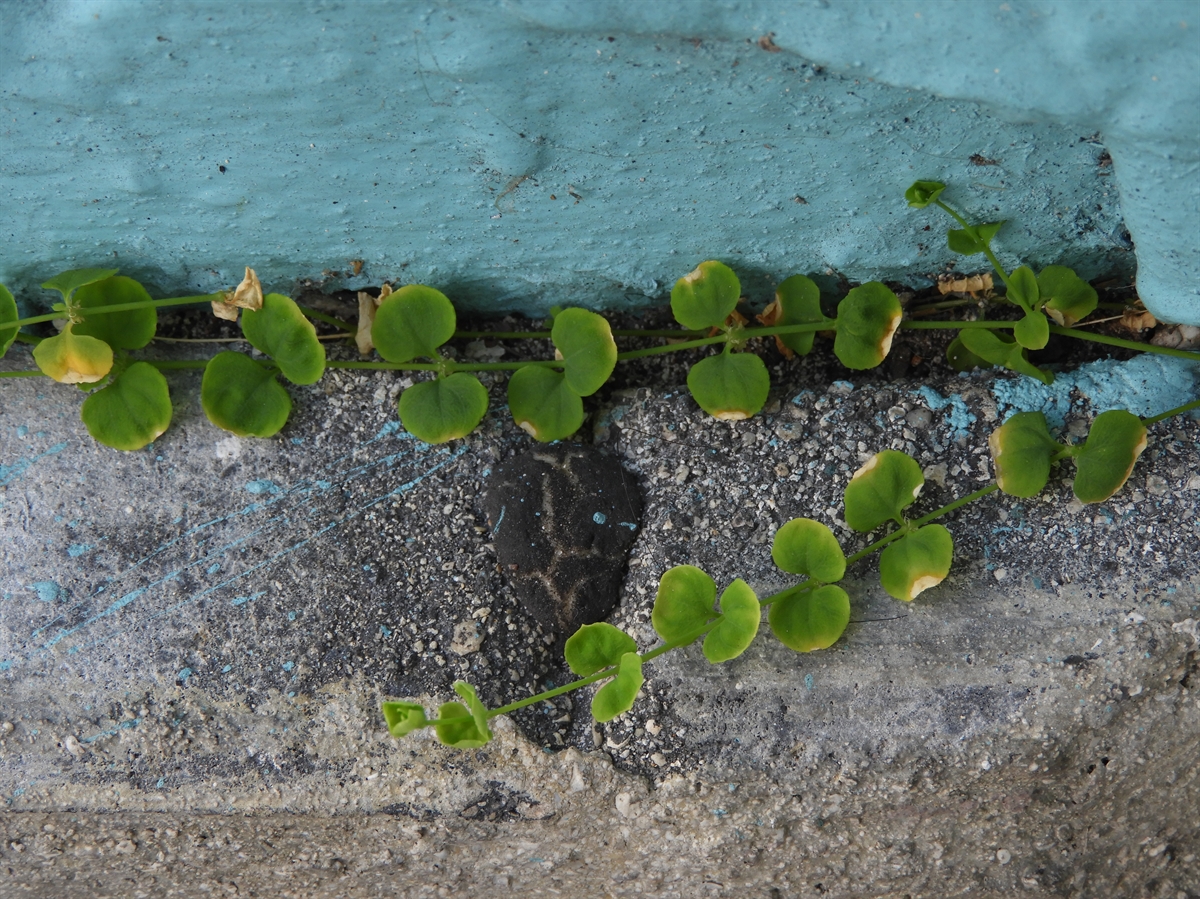Habit: Drymaria cordata grows as a creeping perennial herb rooting at the nodes. The leaves are arranged oppositely, round, to 3 cm in length/wide, with an undulate/crenate leaf margin, rounded or cuspidate leaf apex and cordate leaf base. There are linear to lanceolate stipules.
The complete, perfect, actinomorphic, flowers are arranged in terminal and axillary cymes with glandular pedicels. The calyx has 5 unfused green with white edges, pubescent and glandular sepals. The corolla has 5 white, bilobed, unfused petals. There are 3-5 stamens. The superior ovary has 1 locules and many ovules. The fruit is a capsule at maturity.
Habitat: Drymaria cordata grows in Human Altered environments (yards, gardens, roadsides).
Distribution: Drymaria cordata is NOT native to the Lucayan Archipelago but does occur at least on New Providence. It is native to Mexico, Central and South America as well as central and southern Africa. It now occurs throughout the Caribbean region, the southern United States, Asia and the Indian subcontinent.
Medicinal/Cultural/Economic usage: Drymaria cordata is not known to be used medicinally in the Lucayan Archipelago.


